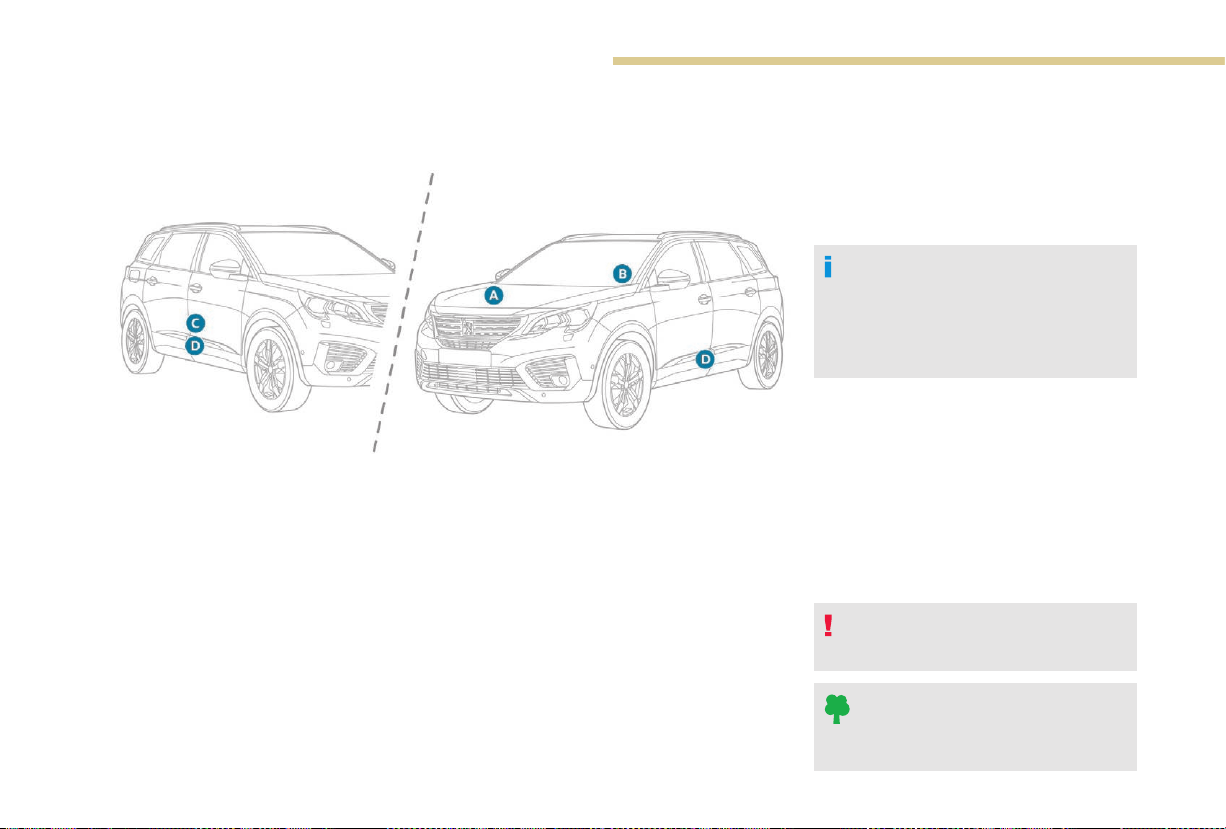Loading ...
Loading ...
Loading ...

296
Technical data
Identication markings
Checking tyre pressures
The tyre pressures should be checked when
cold at least monthly.
The pressures given on the label are valid for
cold tyres. If you have driven for more than
10 minutes or more than 6 miles (10 kilometres)
at more than 30 mph (50 km/h), the tyres will be
warm; in this case 0.3 bar (30 kPa) should be
added to the pressures given on the label.
Never reduce the pressure of a warm tyre.
Low tyre pressures increase fuel
consumption.
Different visible markings for the identification and localisation of your vehicle.
A. Vehicle identification number (VIN),
under the bonnet.
The number is engraved on the body structure.
B. Vehicle identification number (VIN), on
the dashboard.
The number is on a label, visible through the
windscreen.
C. Manufacturer's label.
This tamperproof label is affixed to the right-
hand door.
It bears the following information:
- the name of the manufacturer,
- the European Whole Vehicle Type Approval
number,
- the vehicle identification number (VIN),
- the maximum authorised vehicle weight (the
Gross Vehicle Weight or GVW),
- the maximum authorised vehicle + trailer
weight (the Gross Train Weight or GTW),
- the maximum weight on the front axle,
- the maximum weight on the rear axle.
D. Tyres / paint code label.
This label is affixed to the driver's door
aperture.
It bears the following information about the
tyres:
- the tyre pressures, unladen and laden,
- the tyre specification, made up of the
dimensions and type as well as the load and
speed indices,
- the spare tyre pressure.
It also indicates the paint colour code.
The vehicle may be originally equipped
with tyres with higher load and speed
indices than those indicated on the label,
without affecting inflation pressure.
Loading ...
Loading ...
Loading ...